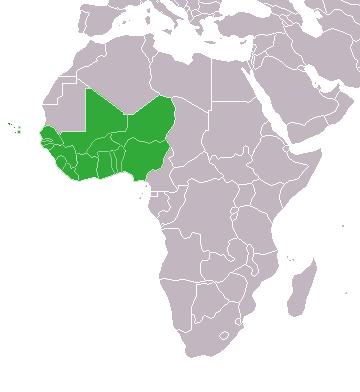The setting of regional and national targets for solar and renewable energy development may be key for the success of clean energy technologies in all 15 countries of the regional economic union of West African States (Ecowas) in 2030, according to a new report published by the International Renewable Energy Agency (IRENA).
The report, based on IRENA’s planning model for West African countries, called the System Planning Test model for Western Africa, predicts that the growth of solar and other clean energy sources in the Ecowas region will be proportionate to the ability of its respective members to set clear targets at both regional and national level.
The most pessimistic scenario provided by IRENA, the Reference Scenario, describes the expected trajectory of renewables in the absence of national or regional targets, while taking into consideration a detailed project pipeline across the region. In this scenario, hydropower is forecast to see its share reduced from 22% in 2015 to 17% in 2030, with increasingly competitive solar PV, wind and biomass to be deployed to meet demand growth and replace retired capacity in the mid-2020s. Solar and wind, however, will only have a combined share of 10% by 2030, with solar reaching 8 GW of installed capacity. Lumped together, renewables will have a 25% share.
The second scenario, called Regional EREP Target Scenario, predicts that region-wide minimum targets will be imposed, and that solar has the potential to see the deployment of 12 GW by 2030.
Popular content
In the third and most optimistic scenario, the National Targets Scenari,o in which clear targets are set, solar may even reach a total installed capacity of 20 GW by 2030, with an annual growth rate of approximately 1.5 GW. This scenario takes into consideration national renewable targets based on specific input from national experts, as well as other data from the Sustainable Energy for All (SEforALL) – an international organization run by the UN to help achieve universal energy access.
The majority of this new solar capacity, according to the report, will be installed in Nigeria, Ghana and Côte d’Ivoire. “Relatively smaller countries with better solar resources (i. e.>20 % average capacity factor), such as Guinea, Burkina Faso, Senegal and Mali, also deploy significant amounts of solar PV capacity to meet their national targets. reflecting their large share of regional electricity demand,” the IRENA experts wrote.
Under this scenario, renewables are expected to reach a 38% share by 2030.
This content is protected by copyright and may not be reused. If you want to cooperate with us and would like to reuse some of our content, please contact: editors@pv-magazine.com.



6 comments
By submitting this form you agree to pv magazine using your data for the purposes of publishing your comment.
Your personal data will only be disclosed or otherwise transmitted to third parties for the purposes of spam filtering or if this is necessary for technical maintenance of the website. Any other transfer to third parties will not take place unless this is justified on the basis of applicable data protection regulations or if pv magazine is legally obliged to do so.
You may revoke this consent at any time with effect for the future, in which case your personal data will be deleted immediately. Otherwise, your data will be deleted if pv magazine has processed your request or the purpose of data storage is fulfilled.
Further information on data privacy can be found in our Data Protection Policy.